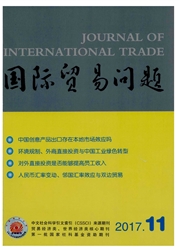

 中文摘要:
中文摘要:
随着价值链发展的不断深入,一国贸易中的国内增加值不断影响着名义有效汇率,也影响着实际有效汇率。本文基于全球价值链视角,立足于中美两国的制造业贸易增加值数据,研究了中美两国整体制造业及各分行业的实际有效汇率,探讨了中美两国整体制造业实际有效汇率的共同特点以及分行业实际有效汇率的差异性。通过对实际有效汇率波动的分解和对有关面板数据的实证检验,发现中美两国名义有效汇率波动对实际有效汇率的影响远大于相对价格;而贸易增加值权重下实际有效汇率对中美两国制造业贸易增加值的作用也不相同。
 英文摘要:
英文摘要:
Accompanying the in-depth development of the value chain, a country's domestic value-added in the trade affectsnot only the Nominal Effective Exchange Rate(NEER), but also the Real Effective Exchange Rate(REER).Based on the global value chain, this paper studies the REER of China-U.S. manufacturing, and tries to find out some common characteristics in REER of manufacturing industry as a whole between the two countries, alsosome differences between the REER in different industries. Furthermore, through the decomposition of the REER fluctuation and empirical test on the panel data, this paper finds that the effect of the NEER fluctuation is far greater than the effect of the relative price fluctuation, andconsidering the weighted trade value-added, the REER of China and the United States does not have the same effect on value-added.
 同期刊论文项目
同期刊论文项目
 同项目期刊论文
同项目期刊论文
 期刊信息
期刊信息
